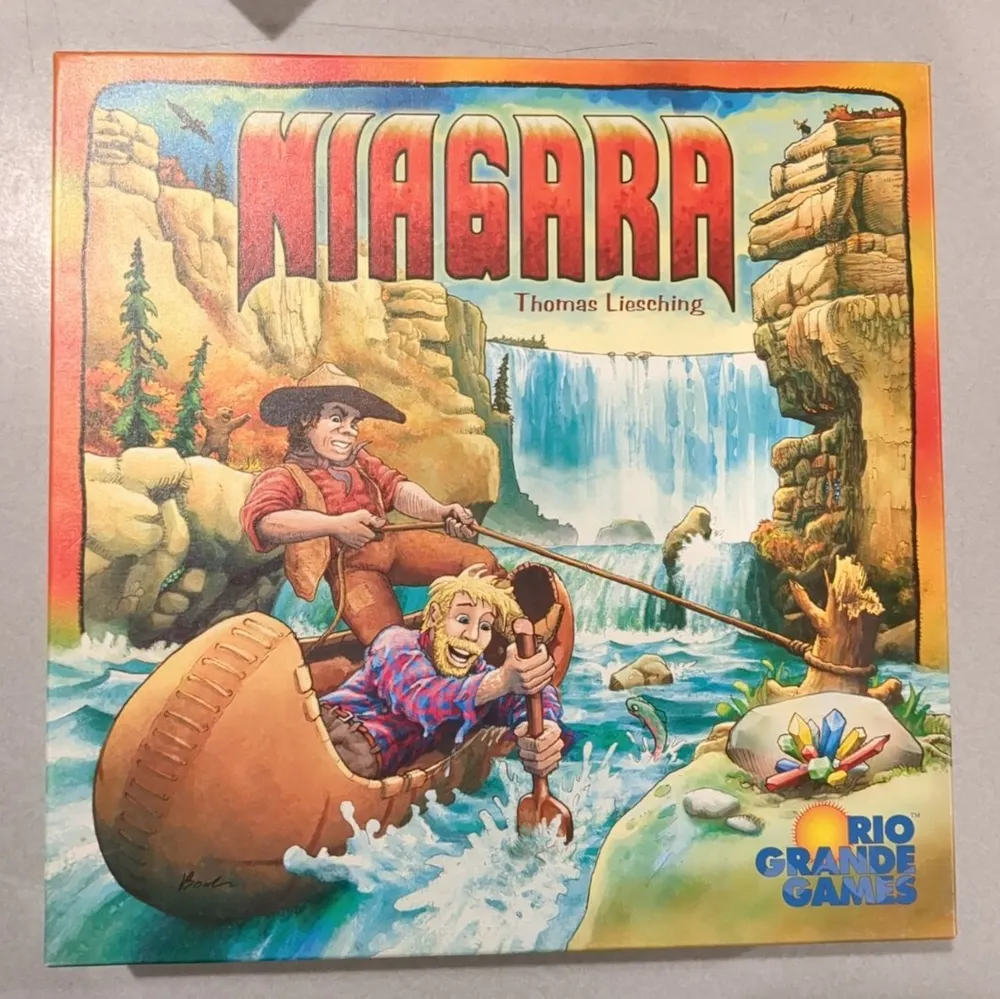Niagara (1997)
Niagara
Niagara is a German-style board game designed by Thomas Liesching and published in 2004 by Zoch Verlag and Rio Grande Games. The game is set in Niagara Falls, and players collect, transport, and steal gems. Upon its release, the game won several awards, including the 2005 Spiel des Jahres.
Why is Niagara Popular?
Niagara is known for its unique Gameplay Mechanics of Niagara, which include a hinged board designed to sit atop the game box and represent Niagara Falls as a flap hanging over the box edge. The river is represented using clear plastic discs in a grooved surface, allowing board spaces to move downstream toward the waterfall. The game is also significant for its use of quirky plastic discs to represent the rushing river.
Game Components of Niagara
How To Setup Niagara
To set up Niagara, place the hinged board on top of the game box, ensuring the flap hangs over the edge to represent the waterfall. Each player chooses two canoes of the same color and places them on the starting line. The gems are placed along the riverbank, and each player receives a set of paddle cards.
Gameplay Mechanics and Game Objective
Player Experience
Niagara offers a unique and engaging experience with its novel gameplay and beautiful components. The game is easy to learn but takes several plays to master, as it requires strategic planning and monitoring of opponents’ moves. The tension arises from the risk of canoes going over the waterfall and the need to outguess other players.
Pros
Cons
Personal Thoughts on Niagara
Niagara is a game that stands the test of time, offering a memorable experience with its unique design and beautiful components. It is ideal for families and casual gamers who appreciate strategic depth without overwhelming complexity. While it may not be the favorite of every gamer due to its mechanics, it is certainly a game worth trying for its originality and the fun it provides. Experienced players will appreciate the tactical nuances, while younger players will enjoy the excitement and challenge of navigating the river.
We are supported by our audience. When you purchase through links on our site, we may earn an affiliate commission, at no extra cost for you. Learn more.

